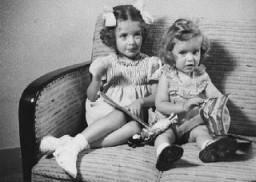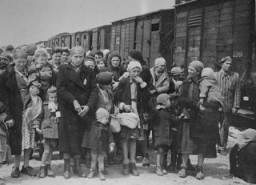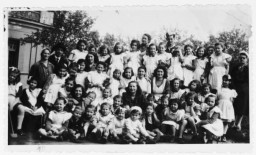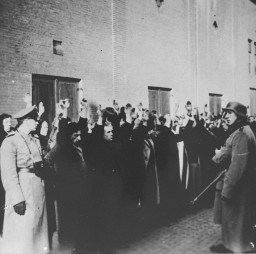
Life in Shadows: Hidden Children and the Holocaust
When World War II ended in 1945, six million European Jews were dead, killed in the Holocaust. About 1.5 million of the victims were children. Some children survived, however, because they were hidden. With identities disguised, and often physically concealed from the outside world, these youngsters had faced constant fear, dilemmas, and danger.
When World War II ended in 1945, six million European Jews were dead, killed in the Holocaust. More than one million of the victims were children.
Driven by a racist ideology that viewed Jews as “parasitic vermin” worthy only of eradication, the Nazis implemented genocide on an unprecedented scale. All of Europe's Jews were slated for destruction: the sick and the healthy, the rich and the poor, the religiously orthodox and converts to Christianity, the aged and the young, even infants.
Thousands of Jewish children survived this brutal carnage, however, many because they were hidden. With identities disguised, and often physically concealed from the outside world, these youngsters faced constant fear, dilemmas, and danger. Theirs was a life in shadows, where a careless remark, a denunciation, or the murmurings of inquisitive neighbors could lead to discovery and death.

Choices
The vast majority of Jews in German-occupied Europe never went into hiding, for many reasons. Hiding meant leaving behind relatives, risking immediate and severe punishment, and finding an individual or family willing to provide refuge. Many Jews, no doubt, held out the hope that the threat of death would pass or that they could survive until the Allied victory.
Sadly, the willingness or ability of the non-Jewish populations to rescue Jewish lives never matched the Nazis' vehement desire to destroy them. Even in countries where hatred for the German occupiers ran deep, anti-Nazism did not necessarily generate aid for Jews. The Nazis portrayed the Jews as carriers of contagion, as criminals, or as “Bolshevik” agents anxious to subvert European society. The Nazis further discouraged rescue by threatening severe penalties for those caught helping Jews.
Discovered
Life in hiding was always hazardous. Throughout German-occupied Europe, the Nazis made a concerted effort to locate Jews in hiding. German officials and their collaborators harshly penalized those who aided Jews and offered rewards to individuals willing to turn in Jews. Beginning in March 1943, the Gestapo (the German secret state police) granted some Jews in Germany reprieve from deportation in exchange for tracking down their co-religionists who had gone underground. By spring 1945, when the Nazi regime lay in ruins, these informers had turned in as many as 2,000 Jews. In other countries, neighbors betrayed others for money or out of support for the regime. In German-occupied Poland, blackmailers squeezed money or property from Jews by threatening to turn them in to the authorities.
Jews in hiding were discovered by chance during raids seeking conscripts for forced labor, resistance cells, black marketers, or by random searches of documents. A slip of the tongue, improperly prepared false documents, or gossip could lead to arrest and deportation.
Series: Children during the Holocaust
Series: Anne Frank
Switch Series
Critical Thinking Questions
- Why were children especially vulnerable to Nazi persecution?
- What risks, pressures, and motivations confronted rescuers?
- What challenges faced hidden children and their families after liberation?
- Do children continue to be especially vulnerable in times of upheaval?













